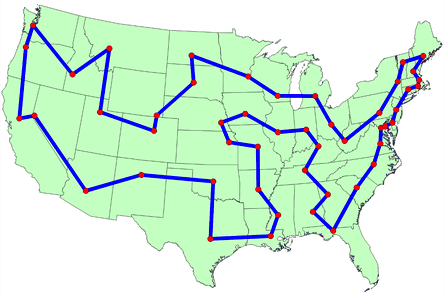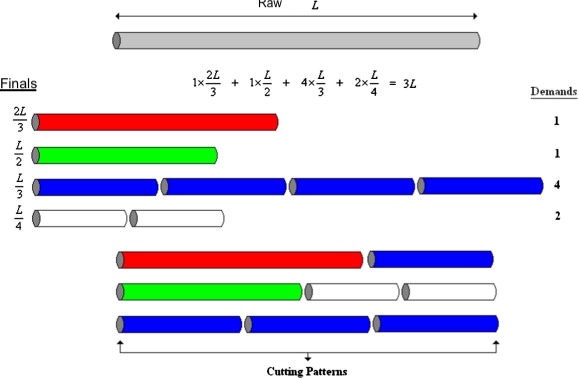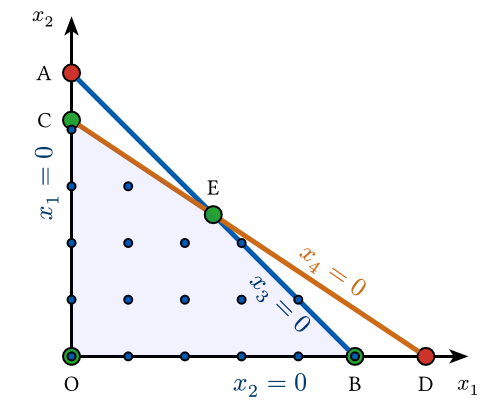ME/AER 647 Systems Optimization I
Mixed Integer Linear Programming
Instructor: Hasan A. Poonawala
Mechanical and Aerospace Engineering
University of Kentucky, Lexington, KY, USA
Topics:
Examples
Branch n Bound
Traveling Salesman Problem
Consider locations with distance between locations and .
Traveling Salesman Problem (TSP)
The TSP involves finding the shortest path (sequence of locations) that visits each location exactly once and returns to the start location.
48 States TSP
Find a closed route that visits all state capitols in the contiguous USA once.
48 States TSP Solution

Available from: https://optimization.cbe.cornell.edu/index.php?title=File:48StatesTSP.png
TSP Formulation
- Variables:
- Optimization problem:
Cutting Stock
- A supplier produces rolls, called raws of some large length
- The supplier can cut these raws into finals of appropriate length according to manufacturer requirements.
- The manufacturer needs some combination of finals to produce components.

Available from: https://www.researchgate.net/figure/One-dimensional-cutting-stock-problem-with-one-stock-type_fig2_257451021
Patterns
A pattern is a combination of finals that can be cut from a single raw
Cutting Stock Problem
Find the smallest number of raws that the manufacturer must order and the corresponding patterns.
The decision variables turn out to be the number of each type of pattern that must be ordered.
There are as many variables as the number of patterns, and as many constraints as the number of patterns
- The parameter is the number of finals of type produced from pattern
MILP Formulation
- Optimization problem:
- is often unity
- are the number of finals of type required
Knapsack Problem
: number of objects type
: weight (or volume) object type
: value of object type
: Weight or volume limit of knapsack
Linear Programming Relaxation
We can remove or relax the integrality constraints to obtain a linear program:
If we solve the resulting LP, solution may or may not be integer-valued
How does the solution of this relaxed linear program (RLP) relate to the original problem? Note: Consider maximization case
- The optimal solution of the RLP is a upper bound for the optimal value of the MILP
- If the optimal solution of the RLP is integer valued, the optimal value is an lower bound for the MILP optimal value
These conclusions lead to the Branch-and-Bound algorithm
Example:

| Pattern | 1 | 2 | 3 | 4 | 5 | 6 | 7 | 8 | 9 | 10 |
|---|---|---|---|---|---|---|---|---|---|---|
| 1 | 0 | 0 | 1 | 0 | 0 | 0 | 1 | 0 | 0 | |
| 0 | 1 | 0 | 0 | 2 | 0 | 0 | 0 | 1 | 0 | |
| 1 | 0 | 3 | 0 | 0 | 0 | 1 | 0 | 1 | 2 | |
| 0 | 2 | 0 | 0 | 0 | 4 | 2 | 1 | 0 | 1 |
MILP Diagram

Systems Optimization I • ME 647 Home